|
The past two weekends I attended a course on learning how to make Hasamigiku (はさみ菊)a nerikiri chrysanthemum made with scissors. Although I have taken couple of classes to learn this art. I never quite got the hang of it, and I never had the time to practice. So I finally decided to take it more seriously and took an online course from Wagashi Kobo Mochiko in Fukuoka which I found on Instagram. The instructor who is a wagashi artisan looked very young in contrast to her works of a master. Because she never showed her face until the end of the class I thought she may be older than me, actually she looked as if she was in her twenties. Nonetheless, she was amazing! I think her class was the best class for cooking class that I have taken so far. I would strongly recommend those who are eager to learn this art, if you speak Japanese, can hire an interpreter. The class focused more on practice rather than demonstration, but a video was provided that we can see her in action later on. She would check one by one and tell us where we are doing wrong, and why it's wrong, and give advice on how to improve. The class started with making the nerikiri dough which is suitable for making the hasamigiku (another eye opener). and how to shape the dough that will be the base for the kiku. Then we would sit and listen to her lecture on the theory behind making the perfect hasamigiku. The last part of the first day would be to make one kiku while the instructor gives us advice. The second session started out with review of the theory and made more hasamigiku, one big and one medium size while she gave out more advices. After 8 hours of learning about Hasamigiku, I think I have learned a great deal and with more practice, I will be confident enough to hold my own classes and teach in her style. The front row is from the second class and the rear row is from the first class. My first hasamigiku in this class started from the far left so there is a huge difference if you watch closely.
0 Comments
To make use of my free time during the soft lockdown. I've taken up a course on Water Confectionery Art. Water confection (水菓子 or Mizugashi) originally was the term for fruits that were served during summer. Nowadays, it expresses cold summer confections made with Jelly. To mold the confections, various jellying agents are used including Kanten (Seaweed) Agar, and Kudzu (Arrowroot).
In this course, you will learn how to express the four seasons with this traditional art as well as learn the techniques on how to use the ingredients that are unique to traditional Japanese sweets. To learn more about this course, please see JSA's official website. If you are interested in taking this course in English, please contact me through the contact form. This course is also available to take online using zoom. (For Japanese residents only). I will also be doing a one-day course for this confection in summer. It's hard to believe that another year has gone by so quickly. The renovation works at our apartment is almost finished and we will be going back this week. I will have to close my cooking class for relocation this week. I will be doing classes at my home in Meguro between 23 and 25 Dec. and then break for winter holiday from the 26th. I will resume classes on the 9th of January.
We are all looking forward to going back home and I can't wait to do classed in my new kitchen. For those of you who have come to my class, thank you so much for your support. For those of you who are interested to come, I hope I can meet you soon! I wish everybody a Merry Christmas and a Happy New Year!!! Just a glimpse of my new kitchen that just arrived last week:  Yesterday was my class before I break for one month. Simply Oishii Japanese Cooking Class and Wagashi School will resume business on Feb. 21st. Also, we will be closed during spring break (March 20 - Apr. 9th) Apologizes for any inconveniences caused. You can still email me for bookings for during my break. I look forward to resuming class with more hands-on fun activities for my mochi class. For class dates, please go to my class calendar. Last weekend, I taught how to make wagashi at a birthday party for a 10 year old girl. Her request was to make a gudetama wagashi, so I tried to make one that would be easy enough for children to make. The hardest part was to make the facial expression and choosing the right materials to make them. I finally came out with a good idea on the night before. I will try to make a video on how to make it when I have time. (If I ever have time).
The party turned out to be a success and the girls seemed to enjoy making wagashi. It was fun for me too although this time it was quite a challenge. To learn more about cooking parties and workshop, please visit this page. To further my studies, I took a 2 day Nerikiri Art Master Certified Instructor Course held by Japan Saloneze Association (JSA). This 12 hour course is open to Nerikiri Art Certified Instructors.
I learned how to use new tools such as Kashi Basami (Scissors for kashi (sweets) and sasara, and learned new techniques such as harikiri (cutting with needle point chopsticks. We also used other types of dough such as konashi, uiro, kanten, and yokan. I'm not sure how much I can implement his in my class but hopefully I will be able to conduct advanced courses in the future (after much practice) For More details on this course, please visit JSA's website. (Please select language to translate). At the moment, they don't have an English textbook but they may come out with one next year. Yesterday, I attended a Shirotamari Workshop held by the CEO of Nitto Jozo to make Shirotamari. Shirotamari is the white color version of the tamari soy sauce. Strictly speaking you can't call Shirotamari a soy sauce as it doesn't contain any soy product.
Those of you who are gluten free may be aware of the Tamari soy sauce as it is a soy sauce that does not contain wheat flour. It is mainly produced in the Aichi prefecture where most of the production of soybean miso takes place. Tamari soy sauce was initially made by using the byproduct of soybean miso. The raw liquid that drips from cedar kegs during the fermentation process produces a puddle (tamari) and the miso makers found ways not to waste this liquid. It has a dark color with a thicker texture than the regular dark miso, which makes it great for dipping sashimi or basting rice crackers. On the other hand, Shirotamari is made by fermenting only wheat for a short period of time which makes it almost colorless. With the strong umami, it can be used in place of salt, but with a more complex flavor. Unlike the other soy sauces, this does not contain any soybeans which makes a great alternative to soy sauce if you are allergic to soybeans. The Shirotamari which we made during the workshop will be ready to use in 3 months time. I can't wait to use it for my Osetchi (New Years feast). Following last month's Nerikiri Basic Course, Another round was conducted this month with two participants. This course is great for those who would like to learn the basic techniques of Nerikiri Art. To learn more about this course together with other courses in my wagashi school, please check out this page. .My first Nerikiri Art Certified Instructor Course took place last week. This is a diploma course created by Japan Saloneze Association to teach you the various techniques used for making nerikiri wagashi. It was originally created for Japanese people but due to the popularity of nerikiri wagashi worldwide, it is now available for foreigners interested to learn. Textbook and Instructor manual has been translated into English. This course can be taken in 3 days. For further details on this course, please visit this page. Today was the 2nd day for the 3 day-Nerikiri Basic Course. Yesterday we made anko and nerikiri dough from scratch. Today, we made spring and summer motifs. Tomorrow, we will be doing autumn and winter motifs. The Nerikiri Basic Course will cover the basic techniques that are used in making wagashi. Since this will be a private lesson or semi-private lesson with 2 participants max, I will make sure you will acquire the technique before you finish the course.
For more details on this course, please check this page. |
AuthorI'm Miyuki and I teach Japanese Home cooking at my home in Tokyo. Archives
February 2021
Categories
All
|
service |
Information |
© COPYRIGHT 2015. ALL RIGHTS RESERVED.
|

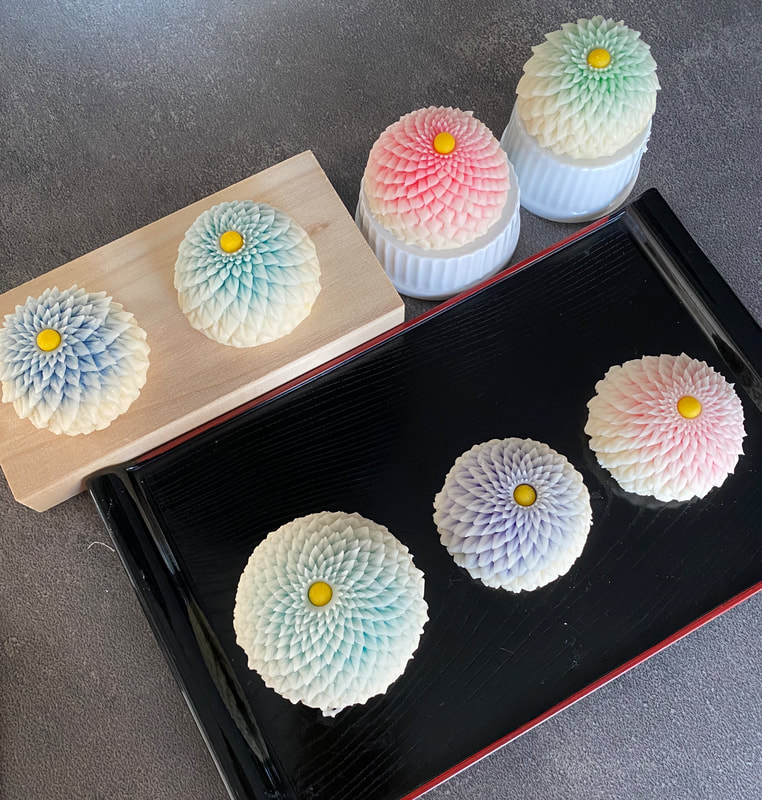

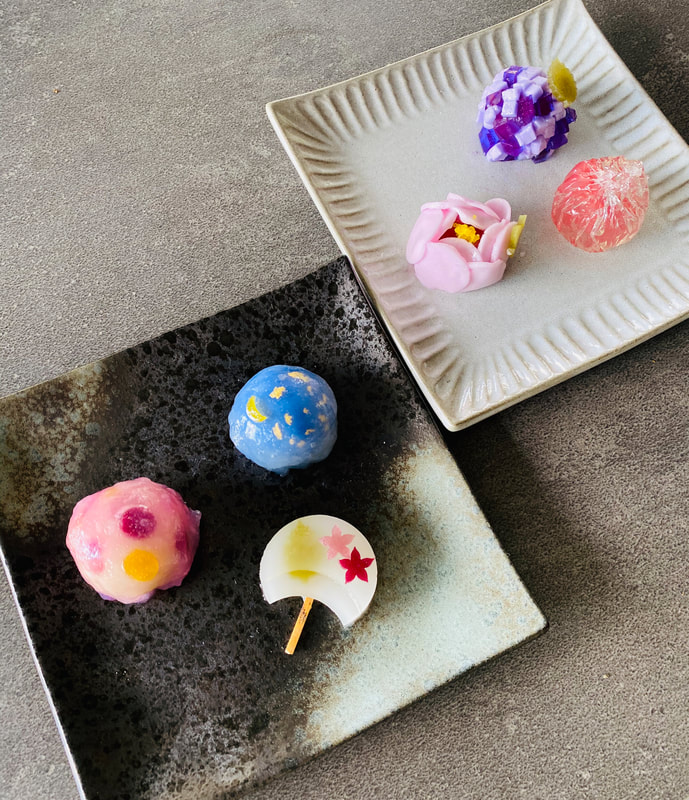


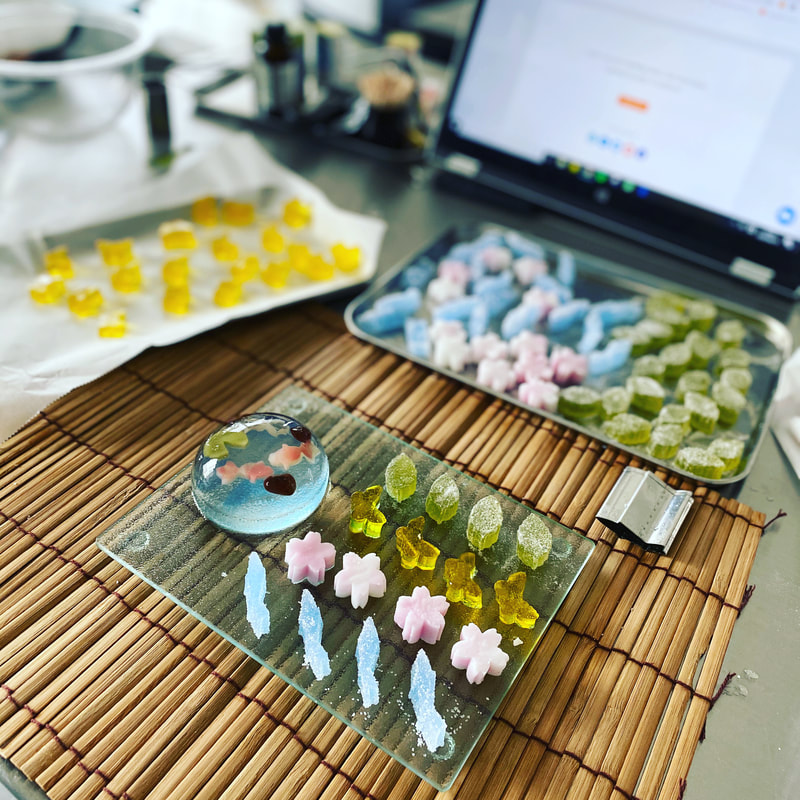






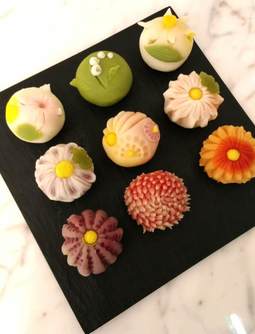
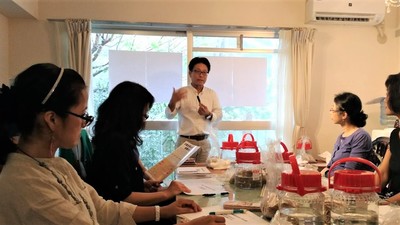





 RSS Feed
RSS Feed
